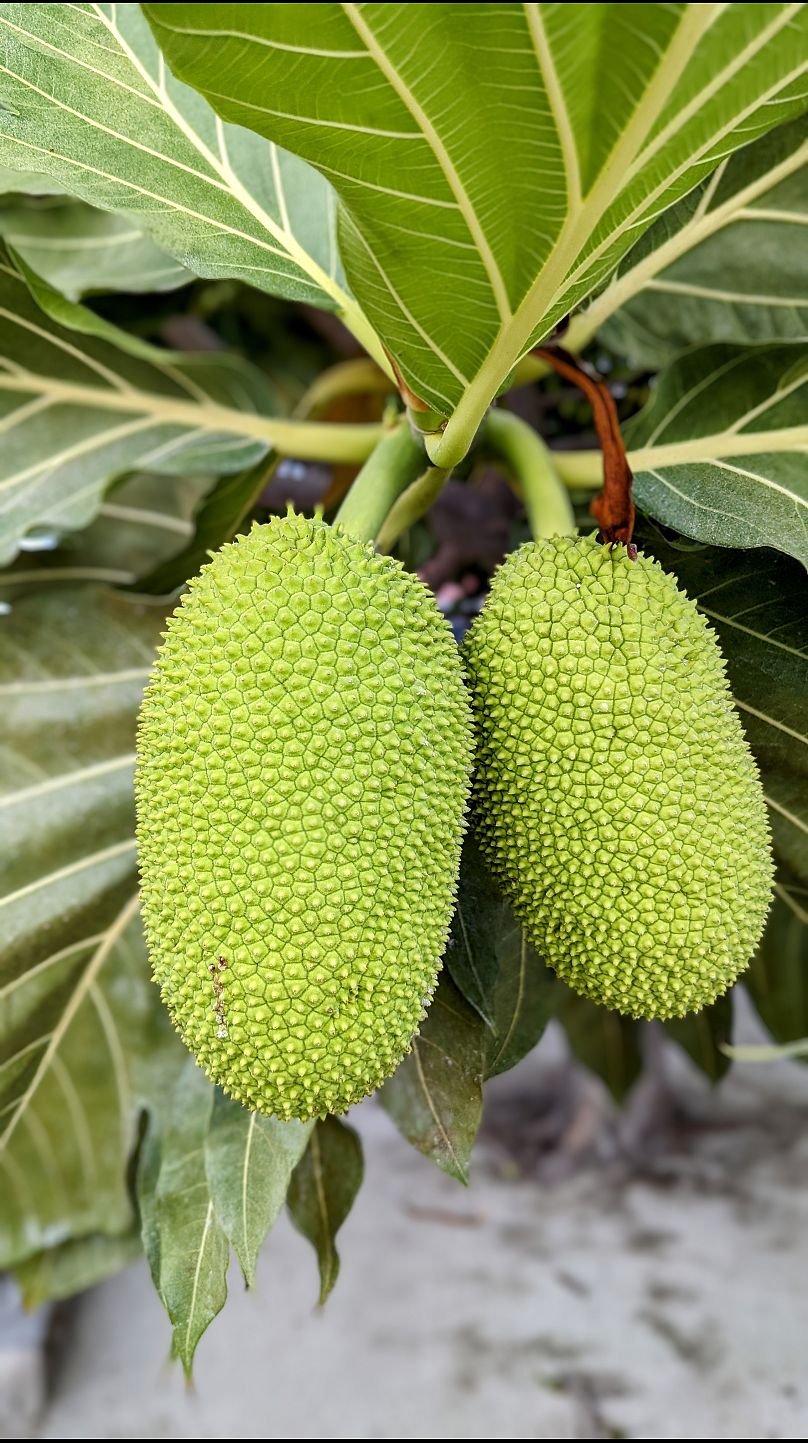Efforts to revive Lahaina’s surviving trees have included trucking in water, applying compost extract and testing soil.
The green leaves that sprouted from a scorched, 150-year-old banyan tree in the heart of devastated Lahaina, Hawaii, became a symbol of hope following Maui’s deadly wildfire this summer.
Teams rushed to flood its roots with water, hoping to save a tree that had provided shade for community events, a picturesque wedding venue and a popular backdrop for posing tourists.
But the fire also nearly wiped out another group of trees – one with a much longer history in Lahaina and a greater significance in Hawaiian culture.
Now, a band of arborists, farmers and landscapers are battling to save this historic plant life that is part of the community’s identity.
Lahaina’s symbolic breadfruit trees were nearly destroyed by fires
Breadfruit, or ulu, trees were introduced to the Hawaiian islands by Polynesian voyagers around 1,000 years ago.
They can grow to 18 metres tall, with large dark green leaves, and each can bear hundreds of pounds of breadfruit.
A staple in some tropical countries, the fruit looks like an oversized, scaly lime. It is typically eaten cooked and is starchy, like potatoes or bread. It has a short shelf life, rotting within 48 hours of ripening.
Before colonialism, commercial agriculture and tourism, thousands of breadfruit trees dotted Lahaina.
The fire charred all but two of the dozen or so that remained.
Lahaina fights to save ancient fire-damaged trees
Now, as Maui recovers from the deadliest US wildfire in more than a century, one that left at least 98 people dead, the community has set about trying to save Lahaina’s breadfruit and other culturally important trees.
They see the destruction as a chance to restore the trees to Lahaina, to teach about their care and use, and to reclaim part of the town’s historic identity.

It comes amid a larger discussion about whether the community’s reconstruction will price out locals and Hawaiian culture in favour of wealthier outsiders seeking a slice of tropical paradise.
“Even in this tragedy and the destruction, there is a lot of hope in our communities that there is opportunity here to bring awareness and appreciation and incorporation of some of our values and history and identity,” said Noa Kekuewa Lincoln, an associate researcher of indigenous crops at the University of Hawaii at Manoa.
‘Trucking in water’
Efforts to revive Lahaina’s surviving trees have included trucking in water, applying compost extract and testing soil.
In the case of breadfruit, the restoration process has involved digging down to the roots of badly burned specimens to find live tissue that could be used to propagate new shoots.
In one case, volunteers peeled back asphalt of a road that butted against a charred breadfruit trunk. Underground, they found life.
The samples they collected are now in a University of Hawaii lab in Hilo, on the Big Island. Lincoln is confident that hundreds of trees could be propagated, with seeds or saplings being given to homeowners seeking to replant their properties.
For Hokuao Pellegrino, an ethnobotanist who has helped in the volunteer effort, the efforts to replant breadfruit in Lahaina should also come with efforts to teach people about its care and its uses: “We want people to use the breadfruit. We don’t want it just to be in the landscape.”
Pellegrino, who calls himself an outsider because he’s not from Lahaina, says reintegrating breadfruit and restoring wetlands, canals and streams could bring a new future for the town.
“It’s about reclaiming the identity of that place,” Pellegrino said.
Source : Euro News















